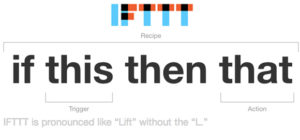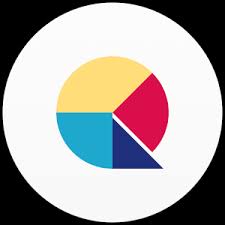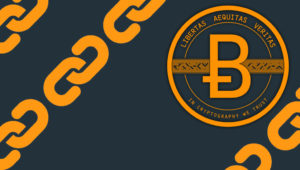 Transitioning from being a paycheck-to-paycheck person to a person with actual accumulated savings in the bank is one of the classic problems of personal finance.
Transitioning from being a paycheck-to-paycheck person to a person with actual accumulated savings in the bank is one of the classic problems of personal finance.
Maybe you got there easily, as soon as you started earning money. If so, you are not the majority. Some never get there. A large number of people are in the middle, struggling from year to year to make progress on the problem of building up some savings.
If you have a problem saving money, maybe you need a fin-tech crutch, one of which I just tried using last month, called Qapital. **
The national average savings rate of 5.7% (saving $5.70 for every $100 earned) is not only well below the minimum recommended 10% rate, but also is well below historical averages in the United States. Not only that, but average means that for every above-average saver, many have no savings at all.
We know from behavioral economics that automation is one of the things that works for both savings and investments. Automation – the slipping away of bits of unnoticed money from your account over time – is the most important tool for savings and investment that I know of. Automation is why 401(k)–type plans work
I picture the power of automation in the context of dieting. If I’m served a big plate at a restaurant, you’re darned right I’m going to finish everything there. Proudly. But if I had a secret invisible robot to remove a portion of food from my plate at every meal, unnoticed by me, I might just slim down faster. Acknowledging my human frailty and appetite, I might just benefit from this technology solution.
Analogously, the automation of savings keeps our greedy little hands from spending all of our money as soon as we get it. The Qapital app which I’ve been trying since April applies this power of automation to the problem of savings, with a few clever twists.
 Quick side note: I guess the app is pronounced “Capital,” because “Kwap-ital” is just too absurd and awful. My wife, however, decided to call it Kwap-ital and that makes me laugh every time.
Quick side note: I guess the app is pronounced “Capital,” because “Kwap-ital” is just too absurd and awful. My wife, however, decided to call it Kwap-ital and that makes me laugh every time.
Anyway, about the app. First, it suggests that you set a goal for savings, such as going on a trip, a specific purchase, or paying down debt. You name your goal in the app. We probably need specific monetary targets, for a specific purpose, in order to do the hard thing.
In mid-April I decided to set a goal of saving $500 so that each of my daughters could have $250 to purchase more shares in their favorite stock. Man, they just love stock investing! I mean, not really, but a Dad can dream. My wife set a goal of saving for a vacation to Scotland. Man, we just love eating haggis. Again, not really.
Anyway, next the app prompts you to link your checking account, which funnels money into a newly-created savings account, held at Wells Fargo and fully FDIC-insured. No word yet on whether Wells Fargo will create a bunch of fake accounts in your name afterwards. (I kid. But they deserve it.)
 Finally, Qapital came up with clever rules to encourage your savings – some sensible, some goofy. You can program Qapital to transfer money into a savings account for accumulating sports memorabilia whenever you use specific hashtags on Twitter, like #TomBrady is the #GOAT. You can set a rule that transfers money to pay for your CrossFit membership whenever you make a terrible decision like purchasing a Unicorn Frappuccino from Starbucks. You can save money for a cruise vacation whenever the temperature in your town goes above 75 degrees, or whenever it rains. You can set a rule that transfers money to savings – to be donated to your favorite political cause – whenever Donald Trump tweets. Seemingly anything that can be measured electronically can be linked to a Qapital rule. These programmed money transfers are known as “If This Then That” technology – or “IFTTT” for the cool kids.
Finally, Qapital came up with clever rules to encourage your savings – some sensible, some goofy. You can program Qapital to transfer money into a savings account for accumulating sports memorabilia whenever you use specific hashtags on Twitter, like #TomBrady is the #GOAT. You can set a rule that transfers money to pay for your CrossFit membership whenever you make a terrible decision like purchasing a Unicorn Frappuccino from Starbucks. You can save money for a cruise vacation whenever the temperature in your town goes above 75 degrees, or whenever it rains. You can set a rule that transfers money to savings – to be donated to your favorite political cause – whenever Donald Trump tweets. Seemingly anything that can be measured electronically can be linked to a Qapital rule. These programmed money transfers are known as “If This Then That” technology – or “IFTTT” for the cool kids.
Other rules follow a more prosaic program for regular transfers into your savings account. A friend of mine uses Qapital to automatically transfer 30% of every freelancer paycheck he receives, so that he’ll have enough money socked away at tax time. That seems like a very sober and clever use of the app.
I chose Qapital’s “52 week rule” in which on week 1 I save $1, on week 2 I save $2, and so on increasing each week by a dollar for 52 weeks. More poetically, they could have named it the “boiled frog” rule, as I feel like the slow increase in savings will be practically unnoticed by me over the course of the year.
Whenever the money moves from my linked checking account into savings, the app sends me friendly reminders and small encouragements. As of this writing I have $10 already in my account. Sweet! Go me!
All of you reading have no doubt already calculated in your heads that I’ll reach my target of $500 by week 32, or around November 26th. Also, if I let it ride for the whole 52 weeks I’ll have set aside $1,378. You can mark your calendars and send me a tweet to ask how the process went. Even better, you could program your Qapital account to transfer money into savings every time you tweet at your favorite finance blogger.
**Also, I’m putting this link here and hoping you’ll forgive me and think I’m not just a hacky shill for $5. But if you do sign up for Qapital after clicking this link, I think I get $5. And so do you!
A version of this post ran in the San Antonio Express News and the Houston Chronicle.
Please see related posts:
Automatic deductions is the key to getting wealthy
Daughter’s first stock investment
Post read (302) times.









